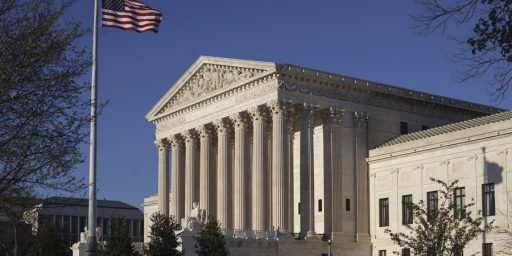University Diversity Of Michigan
One day after the state’s voters approved Proposal 2, a Constitutional amendment banning affirmative action programs, President Mary Sue Coleman vows to devote her efforts to finding a way around the ban. In a statement that has a promising second career as a college drinking game, the word “diversity” appears 21 times;
I will not stand by while the very heart and soul of this great university is threatened.
We are Michigan and we are diversity.
I am joined on these steps by the executive officers and deans of our university. We are united on this. You have my word as president that we will fight for what we believe in, and that is holding open the doors of this university to all people.
Today, I have directed our General Counsel to consider every legal option available to us.
In the short term, we will seek confirmation from the courts to complete this year’s admissions cycle under our current guidelines. We believe we have the right, indeed the obligation, to complete this process using our existing policies. It would be unfair and wrong for us to review students’ applications using two sets of criteria, and we will ask the courts to affirm that we may finish this process using the policies we currently have in place.
This is our first step, but only our first step.
[…]
Of course the University of Michigan will comply with the laws of the state.
At the same time, I guarantee my complete and unyielding commitment to increasing diversity at our institution.
Let me say that again: I am fully and completely committed to building diversity at Michigan, and I will do whatever it takes.
I will need your help. As individuals and as a University, we absolutely must continue to think creatively about how to elevate Michigan’s role as a national model for diversity in higher education.
The words “merit”, “achievement”, and “academic standards” do not make an appearance.






There has been a way around it for the longest time, it existed long before the ban, it’s called “lying through your teeth”
We are Michigan and we are diversity.
Smart white people need not apply.
Can’t they do what they did in Texas – just announce that the top 10% (or 5% – whatever) of the students in a high school class is guaranteed admission if they apply?
Perhaps she should consider dedicating her efforts to helping improve the ACADEMIC COMPETENCE of those in underrepresented groups.
Is it my imagination, or does she does seem to approach the whole diversity thing as if that is not even a possibility?
Funny how she also never mentions complying with the law.
“The words “meritâ€, “achievementâ€, and “academic standards†do not make an appearance.”
It’s The University of Michigan…those words are givens…and this may be a shocker but diversity helps prepare people for the real world…rich white kids are not the end all, be all…I know this will come as a shock!
Why should rich white kids who dads and moms went to U of M get preferential treatment…I notice you never bring up that bit of white bias!
Funny how she also never mentions complying with the law.
They were having conniptions on that point at Volokhia, but certainly, if she thinks the law’s faulty, she’s entitled to challenge it, though not to ignore it. U-MI might well get an injunction if they have a colorable (ha, ha) legal argument, which btw I don’t pretend to say whether they do or not.
Why should rich white kids who dads and moms went to U of M get preferential treatment…I notice you never bring up that bit of white bias!
I don’t see anyone advocating this in this post, so why would it be brought up?
We believe we have the right, indeed the obligation, to complete this process using our existing policies. It would be unfair and wrong for us to review students’ applications using two sets of criteria,
Of course the current process is to use two sets of criteria.
They don’t dumbass – legacies are race neutral.
Mark,
Texas did have that program, but they stopped it. On the surface, taking the top 5/10% of all high school graduates would seem like a great way to get top quality freshmen. But what came out was there is a difference in the quality of the school such that the second 20% in some schools were better able to compete academically than the top 10% in others. Further, with school desegregation you find that whatever the zip code you aren’t guaranteed anything about the racial make up. Racial diversity didn’t rise by taking the top 10%, but a lot of good qualified kids couldn’t get in.
I believe they are now trying to recruit qualified candidate who are from minorities, rather than taking anyone in the top 10%. In short, if you are a minority and good enough they want to talk to you about the advantages of their school. We shall see if this will increase or decrease racial diversity. Some of the initial signs are that the really qualified minority candidates really like this approach because it is their capability that gets recognized. Or to put it another way, the qualified student doesn’t feel they have to prove they have the capability, not just the skin color because their presence means they have the capability. Their skin color doesn’t become a proxy declaration that they are most likely not qualified but here because of their skin color.